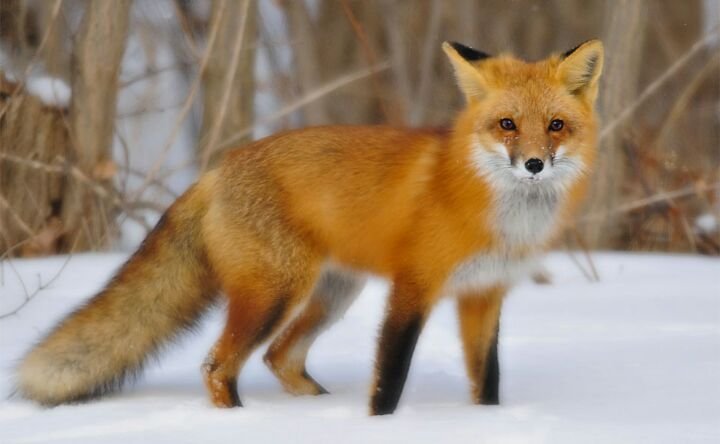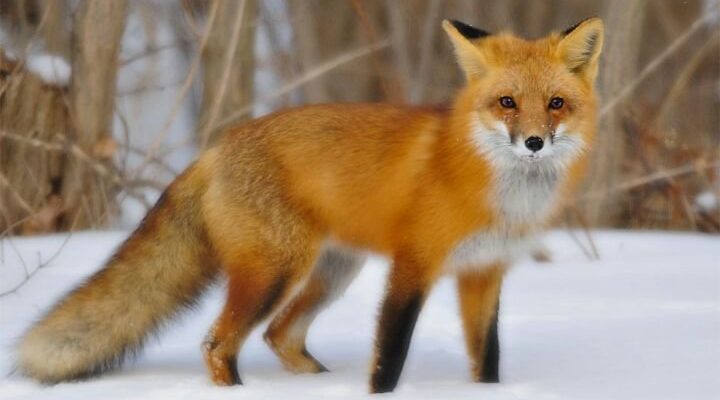
Now, let’s dive into the world of the red fox. Think of them as nature’s own comedians—always surprising us with their behaviors and adaptability. Whether you’re a wildlife enthusiast or just someone who enjoys learning quirky facts, you’re in for a treat! Here are ten facts that might make you look at these beautiful animals in a whole new light.
1. They’re Found Almost Everywhere
One of the most amazing things about red foxes is their adaptability. They inhabit a wide variety of environments, from forests to deserts to urban areas. It’s like they’ve got a map of the world in their heads and can thrive almost anywhere. In fact, you’ll find them across North America, Europe, Asia, and even parts of Africa.
This adaptability stems from their flexible diet and behaviors. Red foxes are opportunistic eaters, meaning they’ll consume whatever food is available. This might include small mammals, birds, insects, fruits, and even scraps from humans. Honestly, they’re nature’s little scavengers and do really well in populated areas, often surprising city dwellers when they spot one rummaging through a trash bin.
2. Their Distinctive Appearance
If you’ve ever seen a red fox, you know that their appearance is striking. They typically have a reddish-orange coat, white underbelly, and a bushy tail tipped in white. It’s almost like they’re dressed up for a party! But what you might not know is that their fur isn’t just for show. It serves multiple purposes.
The coloration helps them blend into their environment, making it easier to sneak up on prey. Plus, their thick fur acts as insulation, keeping them warm during chilly nights. You might be wondering how they can stand the cold—well, red foxes have a unique ability to conserve heat by curling up with their tails wrapped around themselves!
3. Clever Communication Skills
Red foxes are quite the chatterboxes! They have a wide range of vocalizations that help them communicate with each other. From barks to screams to howls, each sound serves a different purpose. Imagine a whole conversation going on in the woods, with foxes expressing everything from excitement to warnings about predators.
One common call is a sharp bark that can sound like a dog. This barking is often used for territorial claims or to signal potential mates. Their vocal skills are not just for fun; they’re essential for survival. Strong communication means better collaboration when it comes to hunting or raising kits, which leads us to our next fascinating fact.
4. Family Dynamics and Parenting
Speaking of kits, did you know that red foxes are dedicated parents? The mother typically gives birth to a litter of four to six kits in the spring. After around 50 to 60 days of gestation, she brings these fluffy little bundles into the world. Both parents take part in raising their young, which is a delightful sight to behold!
Once the kits are born, they stay in the den for several weeks. The parents work together to bring food back to the den and teach their little ones essential survival skills. Watching a family of red foxes interact is like witnessing a real-life animal drama, full of playful antics as the kits learn to pounce and explore.
5. Their Unique Hunting Techniques
Red foxes are crafty hunters. They have developed various techniques to catch their favorite prey—small mammals like rodents. Picture a fox stalking through the tall grass, its ears perked up and its eyes zeroed in on the target. They often perform a unique behavior called “mousing,” where they leap into the air and pounce down onto their prey. It’s both a skill and a spectacle!
This method is particularly effective in snowy or grassy terrains. Their keen sense of hearing allows them to detect prey beneath the ground, showcasing just how in-tune these animals are with their surroundings. It’s not just about being sneaky; it’s about using the environment to their advantage.
6. The Red Fox’s Diet Is Diverse
You might picture red foxes as strict carnivores, but that’s not the full story. Their diets are quite diverse, which helps them adapt to different environments. While they do enjoy a good meal of small mammals, they are omnivores at heart!
Their diet can include:
- Small rodents
- Birds
- Fruits and berries
- Insects
They’ll even scavenge for human food if the opportunity arises! This adaptability is one reason why they can thrive in urban areas. So, whether they’re dining on a delicious mouse or a fallen apple, red foxes know how to make the most of their meals.
7. Their Role in the Ecosystem
Red foxes play a significant role in the ecosystem, acting as both predator and prey. They help control populations of rodents, which can become pests if left unchecked. By keeping these populations in balance, foxes contribute to a healthier environment.
Moreover, they are also food for larger predators. Animals such as coyotes and eagles can prey on red foxes, showing how they fit into the food web. It’s a classic case of nature’s balancing act, where every creature has a part to play. Isn’t it fascinating how interconnected everything is?
8. Red Foxes and Folklore
Throughout history, red foxes have captured the human imagination and played significant roles in various cultures and folklore. They often symbolize cunning and cleverness, thanks to their sly nature. You might remember tales featuring a crafty fox outsmarting its enemies—those stories come from a long tradition!
In some cultures, they are seen as tricksters, while in others, they’re viewed as wise beings. This representation in folklore reflects our ongoing fascination with red foxes and how we see them as more than just animals; they’re characters with personalities and stories. It’s something to ponder the next time you see a fox in the wild!
9. Conservation Status
Despite their widespread presence, some red fox populations face threats from habitat loss and hunting. Certain subspecies, like the Sierra Nevada red fox, are considered endangered. This can be alarming, especially since they play such a crucial role in the ecosystem.
Conservation efforts are vital to protect their habitats and ensure these beautiful creatures continue to thrive. Protecting the environment is everyone’s responsibility. Supporting local conservation groups or advocating for natural spaces can make a real difference!
10. Fun Facts You Didn’t Know
Let’s wrap up with some fun tidbits about red foxes that will definitely surprise you:
– They can jump up to six feet high! This comes in handy when they need to escape predators or leap over obstacles.
– Red foxes have whiskers that can measure up to 4 inches long. These long whiskers help them sense their environment, which is crucial for hunting.
– They have a unique scent gland close to their tail, which they use to mark territory. It’s like leaving a signature everywhere they go!
These little facts give you more insight into the incredible world of red foxes, making them even more fascinating in your eyes.
In conclusion, red foxes are more than just charming animals; they’re complex beings with interesting behaviors and important roles in our ecosystems. Whether you’re admiring them from afar or sharing stories about them around the campfire, there’s no denying their allure. So next time you hear a fox call—or spot one in the wild—remember these amazing facts and appreciate all that they bring to the natural world!

